Electric linear actuators offer a performance solution for wind turbine systems
28th July 2011
Source:
Warner Linear
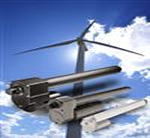
As wind turbine designers look to get more and more from their systems, key areas of focus are improving efficiency and simplifying maintenance.
Seen from a distance, the seemingly slow spin of a wind turbine’s rotor is almost hypnotic, belying the sophistication of the control systems needed to maintain the ideal speed in varying wind conditions, to lock down the rotor when maintenance is needed, and to improve the ergonomics for maintenance and service personnel. Historically, hydraulic actuators have been used to perform many of these functions, but increasingly designers are seeing the benefits of moving to electric actuators. That is leading them to Warner Linear – part of the Altra Industrial Motion group – which has an unrivalled expertise in supplying power transmission products for wind turbine systems, combined with a wide range of electric linear actuators designed to meet the performance and environmental requirements of today’s wind turbine installations.
Electric actuators have a number of advantages over hydraulic actuators in wind turbine designs. Importantly, they meet performance requirements with significantly reduced weight, which helps to improve efficiency. They are also smaller than their hydraulic counterparts, enabling overall space requirements to be optimised. Installation is much simpler, and ongoing maintenance requirements dramatically reduced – a key issue when wind farms are located offshore. With no fluids to change and no potential for leaks, electric actuators are safer in use than hydraulics. Further, they are easier to control, and self-locking with no power applied, simplifying overall system design.
It is no wonder then that designers are turning to electric actuators to control critical functions such as rotor locking, blade pitch control and blade locking.
For maintenance, the spinning rotor of a wind turbine represents something of a hazard, so the rotor has to be brought to a stop and then locked in position. Brakes provide slowing and parking of the rotor, but an actuator is also provided to lock the rotor in position by pushing a locking bolt into the lock disc on the rotor, securing it safely to enable inspections or maintenance work on the wind turbine to be carried out.
A vital aspect of wind turbine operation is pitch control, keeping the blades turning at optimum speed. If the wind picks up, driving the rotor faster, pitching the blades slightly out the wind will bring the speed back down. Conversely, if the wind drops, the blades can be pitched back into the wind. Pitch control systems are extremely sophisticated, controlling the blade pitch to within fractions of a degree to maintain the optimum angle. Electric actuators provide the ideal mechanism to deliver these small changes in pitch. In addition, linear actuators can also provide a blade locking function to lock the blade in position after it has been rotated.
Designers are also turning to electric actuators to improve the ergonomics of wind turbines, providing powered opening and closing of service hatches and access gates. The simplicity, compact design, light weight and cost-efficiency of electric actuators over hydraulic alternatives makes it viable to add these functions to modern wind turbines.
The performance requirements of actuators in these demanding applications can be extreme, with the electric actuators required to provide high force and to perform reliably in extreme environmental conditions in remote locations where maintenance is costly. For these reasons, linear actuators from Warner Linear have quickly become the products of choice in wind turbine applications. Warner Linear offers a wide range of rugged duty actuators, using a patented straight line load transfer system to deliver high load capacity in a small package size. The range is typified by the B-Track K2 series which can provide forces up to 9800N – the highest load rating in their class. They also provide efficient power use, excellent corrosion resistance and have a sealed design to resist dust and spray.
For enhanced reliability, K2 series actuators use protective coatings and O-ring seals throughout. They are lubricated for life, and so require minimal maintenance. Double ball bearing motors and heat treated gears ensure increased reliability in the most demanding applications.
Warner Linear also offers a full range of actuator controls, from simple extend/retract switch boxes to full microprocessor based controllers for sophisticated, precision positioning systems.
The performance characteristics of these actuators make them ideal alternatives to hydraulic actuators in wind turbine installations where engineers are looking for reduced size, lower weight, simpler control strategies and easier maintenance.
Electric actuators have a number of advantages over hydraulic actuators in wind turbine designs. Importantly, they meet performance requirements with significantly reduced weight, which helps to improve efficiency. They are also smaller than their hydraulic counterparts, enabling overall space requirements to be optimised. Installation is much simpler, and ongoing maintenance requirements dramatically reduced – a key issue when wind farms are located offshore. With no fluids to change and no potential for leaks, electric actuators are safer in use than hydraulics. Further, they are easier to control, and self-locking with no power applied, simplifying overall system design.
It is no wonder then that designers are turning to electric actuators to control critical functions such as rotor locking, blade pitch control and blade locking.
For maintenance, the spinning rotor of a wind turbine represents something of a hazard, so the rotor has to be brought to a stop and then locked in position. Brakes provide slowing and parking of the rotor, but an actuator is also provided to lock the rotor in position by pushing a locking bolt into the lock disc on the rotor, securing it safely to enable inspections or maintenance work on the wind turbine to be carried out.
A vital aspect of wind turbine operation is pitch control, keeping the blades turning at optimum speed. If the wind picks up, driving the rotor faster, pitching the blades slightly out the wind will bring the speed back down. Conversely, if the wind drops, the blades can be pitched back into the wind. Pitch control systems are extremely sophisticated, controlling the blade pitch to within fractions of a degree to maintain the optimum angle. Electric actuators provide the ideal mechanism to deliver these small changes in pitch. In addition, linear actuators can also provide a blade locking function to lock the blade in position after it has been rotated.
Designers are also turning to electric actuators to improve the ergonomics of wind turbines, providing powered opening and closing of service hatches and access gates. The simplicity, compact design, light weight and cost-efficiency of electric actuators over hydraulic alternatives makes it viable to add these functions to modern wind turbines.
The performance requirements of actuators in these demanding applications can be extreme, with the electric actuators required to provide high force and to perform reliably in extreme environmental conditions in remote locations where maintenance is costly. For these reasons, linear actuators from Warner Linear have quickly become the products of choice in wind turbine applications. Warner Linear offers a wide range of rugged duty actuators, using a patented straight line load transfer system to deliver high load capacity in a small package size. The range is typified by the B-Track K2 series which can provide forces up to 9800N – the highest load rating in their class. They also provide efficient power use, excellent corrosion resistance and have a sealed design to resist dust and spray.
For enhanced reliability, K2 series actuators use protective coatings and O-ring seals throughout. They are lubricated for life, and so require minimal maintenance. Double ball bearing motors and heat treated gears ensure increased reliability in the most demanding applications.
Warner Linear also offers a full range of actuator controls, from simple extend/retract switch boxes to full microprocessor based controllers for sophisticated, precision positioning systems.
The performance characteristics of these actuators make them ideal alternatives to hydraulic actuators in wind turbine installations where engineers are looking for reduced size, lower weight, simpler control strategies and easier maintenance.
Similar articles
More from Warner Linear
- Warner Linear develops new actuator range to meet customer’s needs 30th September 2015
- Warner Linear cuts downtime for off-highway vehicle maintenance 28th April 2015
- Warner Linear actuators qualify for 3D racing simulator 26th March 2015
- Digital CAN actuator control fulfils ATV demands 22nd August 2014

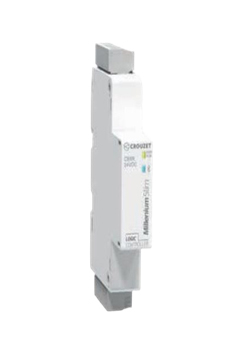
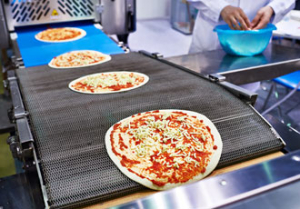
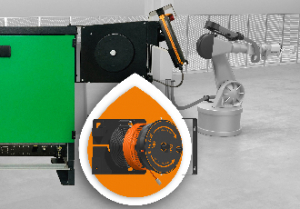
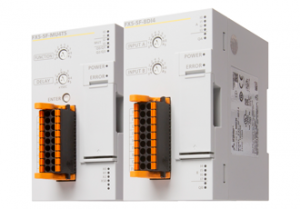







Write a comment
No comments